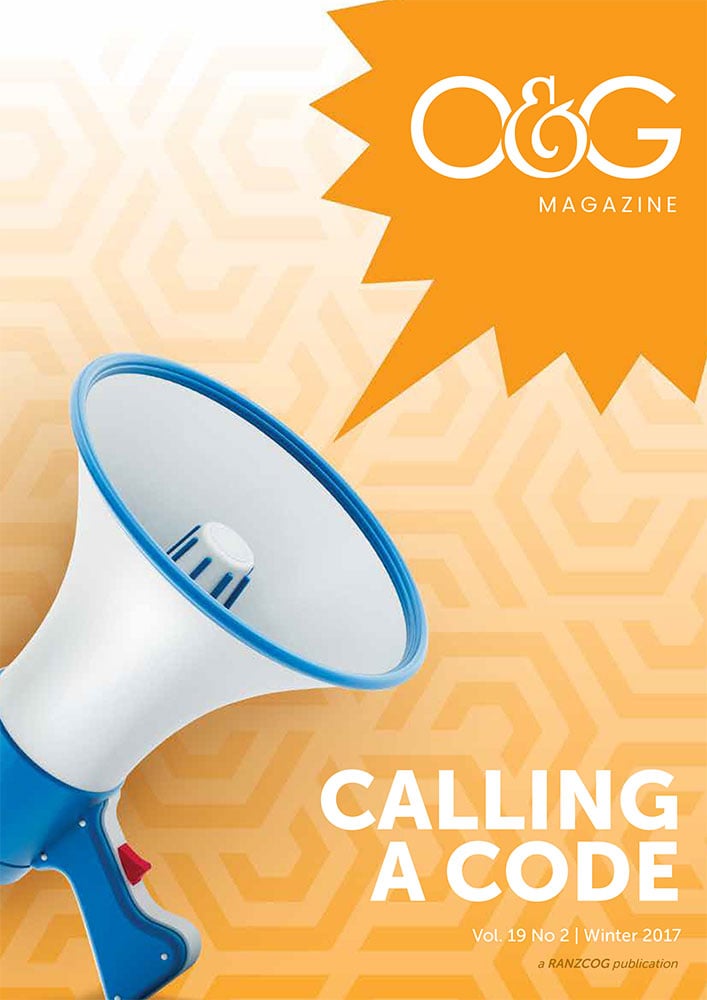Pink, red, blue, green, orange – the colours vary from institution to institution, but an emergency code is universal – notification of an event that requires immediate attention. An emergency code should convey essential information quickly and minimise misunderstanding, differentiating between a maternal collapse on the delivery unit, cardiac arrest on the gynaecology ward or a neonatal emergency.
This issue, ‘Calling a code’, contains core knowledge about management of obstetric and gynaecological emergencies. Regrettably, without effective teamwork, this will not help you much in a clinical emergency. Emergency drills train practitioners to communicate and function well as a team in a stressful situation. For example, how do you order desperately needed units of blood, ensuring that one individual has been assigned and completed that task?
A key message from the 2016 UK Confidential Enquiry into Maternal Deaths report (MBRRACE-UK) was that ‘early recognition of critical illness, prompt involvement of senior clinical staff and authentic multidisciplinary team working, remain the key factors in providing high-quality care to sick mothers’.
The Perinatal Mortality and Morbidity Review Committee (NZ) has likewise recommended all staff should have regular multidisciplinary training to manage obstetric emergencies. Special attention was drawn to the high rate of amniotic fluid embolism (AFE) as cause for maternal death in the latest report (2016). Review suggested improved recognition of AFE in women who collapse and co-ordinated resuscitation of mothers may improve the chance of survival.
PRactical Obstetric MultiProfessional Training (PROMPT) is now a well established course in both New Zealand and Australia. The stated aim is ‘improving teamwork in obstetric emergencies, set in your own institution, with obstetric trainees and consultants, anaesthetists and midwifery members of the team practising drills together’. It is all too easy to get drawn into performing a practical task in a crisis and to lose sight of the bigger picture. To regain control, PROMPT teaches and puts into practice strategies, such as declaring an emergency, taking a ‘helicopter view’, giving clear simple commands and suitable delegation of tasks. The Advanced Life Support in Obstetrics (ALSO) course aims to impart knowledge and build confidence among obstetric professionals managing emergencies, in a calm and supportive environment, usually away from your place of work. While the benefits of practical emergency drills are not disputed, the sustainability and integrity of the courses are not assured. Our challenge is to persuade government agencies that this is a worthwhile investment.
Further reading
Winter C, Crofts J, Laxton C, et al (Eds) Sowter M, Weaver E, Beaves M. PROMPT PRactical Obstetric MultiProfessional Training Course Manual, Australian and New Zealand Edition. 2008.
Knight M, Nair M, Tuffnell D, Kenyon S, et al (Eds.) on behalf of MBRRACE-UK. Saving Lives, Improving Mothers’ Care – Surveillance of maternal deaths in the UK 2012–14 and lessons learned to inform maternity care from the UK and Ireland Confidential Enquiries into Maternal Deaths and Morbidity 2009-14. Oxford: National Perinatal Epidemiology Unit, University of Oxford, 2016.
PMMRC. 2016. Tenth Annual Report of the Perinatal and Maternal Mortality Review Committee: Reporting mortality 2014. Wellington: Health Quality & Safety Commission.






Leave a Reply